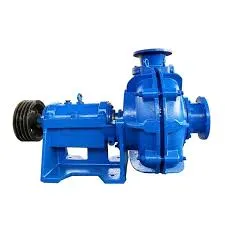English
- Afrikaans
- Albanian
- Amharic
- Arabic
- Armenian
- Azerbaijani
- Basque
- Belarusian
- Bengali
- Bosnian
- Bulgarian
- Catalan
- Cebuano
- Corsican
- Croatian
- Czech
- Danish
- Dutch
- English
- Esperanto
- Estonian
- Finnish
- French
- Frisian
- Galician
- Georgian
- German
- Greek
- Gujarati
- Haitian Creole
- hausa
- hawaiian
- Hebrew
- Hindi
- Miao
- Hungarian
- Icelandic
- igbo
- Indonesian
- irish
- Italian
- Japanese
- Javanese
- Kannada
- kazakh
- Khmer
- Rwandese
- Korean
- Kurdish
- Kyrgyz
- Lao
- Latin
- Latvian
- Lithuanian
- Luxembourgish
- Macedonian
- Malgashi
- Malay
- Malayalam
- Maltese
- Maori
- Marathi
- Mongolian
- Myanmar
- Nepali
- Norwegian
- Norwegian
- Occitan
- Pashto
- Persian
- Polish
- Portuguese
- Punjabi
- Romanian
- Russian
- Samoan
- Scottish Gaelic
- Serbian
- Sesotho
- Shona
- Sindhi
- Sinhala
- Slovak
- Slovenian
- Somali
- Spanish
- Sundanese
- Swahili
- Swedish
- Tagalog
- Tajik
- Tamil
- Tatar
- Telugu
- Thai
- Turkish
- Turkmen
- Ukrainian
- Urdu
- Uighur
- Uzbek
- Vietnamese
- Welsh
- Bantu
- Yiddish
- Yoruba
- Zulu
Telephone: +86 13120555503
Email: frank@cypump.com
Nov . 24, 2024 00:45 Back to list
slurry pump working principle
Understanding the Working Principle of Slurry Pumps
Slurry pumps are essential equipment in various industrial applications, particularly in mining, mineral processing, and construction. They are designed to transport mixtures of liquid and solid particles, referred to as slurries, which can be abrasive and corrosive. Understanding the working principle of slurry pumps is crucial for optimizing their performance and ensuring efficiency in processes that depend on their operation.
Basic Design and Components
Slurry pumps typically consist of several key components a pump casing, an impeller, a shaft, and a wear plate or liner. The pump casing serves as the outer shell that holds all the components together, while the impeller is a rotating element that imparts kinetic energy to the slurry. The shaft connects the impeller to the driving motor, and the wear plates are designed to protect the pump's internals from the abrasive nature of the slurry.
Working Principle
The working principle of a slurry pump is quite similar to that of a conventional centrifugal pump. When the slurry enters the pump, it moves through the inlet and into the pump casing. Here, the impeller begins to rotate, creating a centrifugal force that accelerates the slurry radially outward. This acceleration transforms kinetic energy into velocity, effectively lifting the slurry from a lower elevation to a higher elevation or transporting it through pipelines.
As the impeller spins, the slurry is forced into the volute or diffuser, where it slows down, allowing the conversion of kinetic energy into pressure energy. This increase in pressure is what enables the slurry to be discharged through the outlet of the pump, overcoming any resistance in the piping system.
slurry pump working principle

Materials and Design Considerations
Due to the harsh conditions under which slurry pumps operate, the materials used in their construction are of utmost importance. Pumps are commonly made from high-chrome alloys, rubber linings, or other durable materials designed to withstand wear and corrosion. Engineers must carefully select the materials based on the specific properties of the slurry being pumped, including its viscosity, particle size, and chemical composition.
Maintenance and Efficiency
To ensure optimal performance and longevity, regular maintenance of slurry pumps is vital. This includes inspecting the wear plates, checking for any damage to the impeller, and monitoring the pump's operation for any unusual vibrations or noises. Efficient operation is also influenced by the pump's design parameters, such as flow rate and head. Engineers must calculate these parameters accurately during the design phase to prevent cavitation, which occurs when there is insufficient pressure in the pump to keep the liquid in a stable state, potentially causing damage.
Conclusion
In summary, the working principle of slurry pumps revolves around the centrifugal force generated by the rotating impeller, which effectively transports abrasive and viscous mixtures through a system. With careful consideration of materials, design, and maintenance, slurry pumps can operate efficiently in challenging environments, making them invaluable assets in industries that rely on transporting slurries. Understanding their operation not only aids in selecting the right pump for specific applications but also ensures the longevity and reliability of these crucial machines in industrial settings.
-
ISG Series Vertical Pipeline Pump - Chi Yuan Pumps Co., LTD.|High Efficiency, Energy Saving, Low Noise
NewsJul.30,2025
-
ISG Series Vertical Pipeline Pump- Chi Yuan Pumps|High Efficiency&Low Noise
NewsJul.30,2025
-
ISG Series Vertical Pipeline Pump-Chi Yuan Pumps Co., LTD.|High Efficiency&Energy Conservation
NewsJul.30,2025
-
ISG Series Vertical Pipeline Pump - Chi Yuan Pumps Co., LTD.|Advanced Hydraulic Design&Energy-Efficient Solutions
NewsJul.30,2025
-
ISG Series Vertical Pipeline Pump - Chi Yuan Pumps Co., LTD.
NewsJul.30,2025
-
ISG Series Vertical Pipeline Pump - Chi Yuan Pumps Co., LTD.|energy-efficient fluid handling&industrial durability
NewsJul.30,2025










